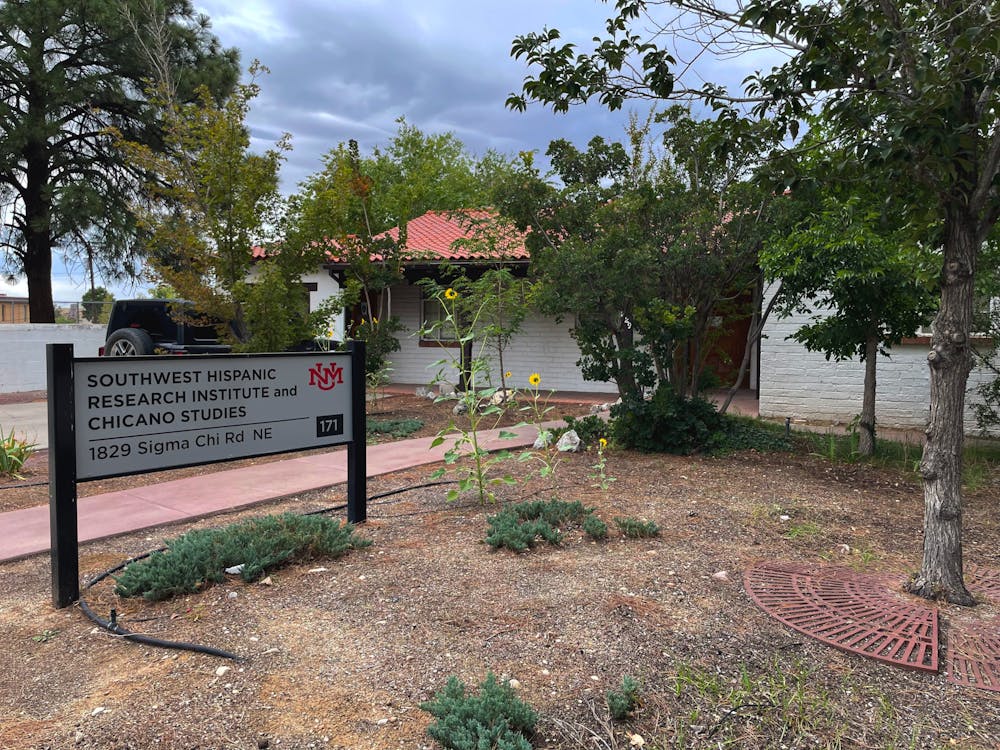Although the term Hispanic Serving Institution (HSI) is federally defined, to University of New Mexico students and staff, it means much more.
The US Department of Education defines a HSI as a higher education institution that has at least 25% Hispanic undergraduate full-time equivalent students enrolled at the end of the application year.
“For people who work at HSIs, they play around with the idea that it’s not actually a Hispanic serving institution - (employees) argue that these universities don’t actually serve Hispanic students but rather are Hispanic enrolling institutions,” Natalia Toscano said - a Ph.D. candidate in the Chicano & Chicana Studies department.
Being an HSI means actively thinking about how to serve Hispanic students on campus, Rosa Isela Cervantes said - Director of El Centro de la Raza and Special Advisor to the President on Latino/a Affairs.
“It means putting on a lens to be able to think through what we are doing to support Hispanic students, what aside from having the numbers, what’s the work that’s being done to help students reach the end goal of getting a degree,” Cervantes said.
Third year CCS undergraduate student, Reyes Reynaga, said that coming into UNM as a freshman, he didn’t know the term HSI existed.
Reynaga first learned what HSI meant through being involved at El Centro de la Raza and the LGBTQ Resource Center. He suggested UNM could potentially implement the term HSI into their syllabi requirements.
“UNM could definitely be doing more to serve their Hispanic students,” Reynaga said. “I love that they encourage Hispanic culture on campus and embrace culture, but there’s more that could be done on the professional side.”
Cervantes and LGBTQ Resource Center Director Frankie Flores spoke about the responsibility they feel for their students because of the school’s designation. Flores emphasized the intersectionality that comes with being an HSI and being home to one of the only LGBTQ resource centers in the region.
“Being one of the only Queer centers in the Southwest and being an HSI influences the programming that we do here at the center,” Flores said. “We center Latinidad because that is the majority of our population.”
Cervantes said that she feels that her work goes beyond the undergraduate population, with more Hispanic students pursuing graduate degrees. One such student is Toscano.
Typically, Toscano said, at the graduate/professional level, a large Hispanic population is unexpected and that many of her students do not know what an HSI is or that they are attending one.
Get content from The Daily Lobo delivered to your inbox
“For students, they see themselves in the classroom - a lot of brown faces sitting next to them but I think the university doesn’t make it known that they’re an HSI,” Toscano said.
Although the term is used for promotional purposes, Toscano and Reynaga said the Hispanic-focused departments and organizations often have to fight for funding.
“Categorically, Hispanic students have the lowest retention and graduation rates at UNM,” Toscano said. “I don’t think it’s just about students knowing that they’re going to an HSI but feeling like they are a priority of the University.”
The University and staff, Flores said, have a responsibility to Hispanic students in explaining HSI and furthering knowledge of students’ rights. “If a Hispanic student doesn’t know what an HSI is, it means we are not doing our job correctly,” Flores said.
“But how many resources are we putting towards those students to ensure that they are graduating and what are we doing to improve the graduation numbers for Hispanic students,” Flores said.
Marcela Johnson is a beat reporter for the Daily Lobo. She can be contacted at culture@dailylobo.com or on Twitter @DailyLobo.
Marcela Johnson is a beat reporter for the Daily Lobo, and the editor-in-chief of Limina: UNM Nonfiction Review.






